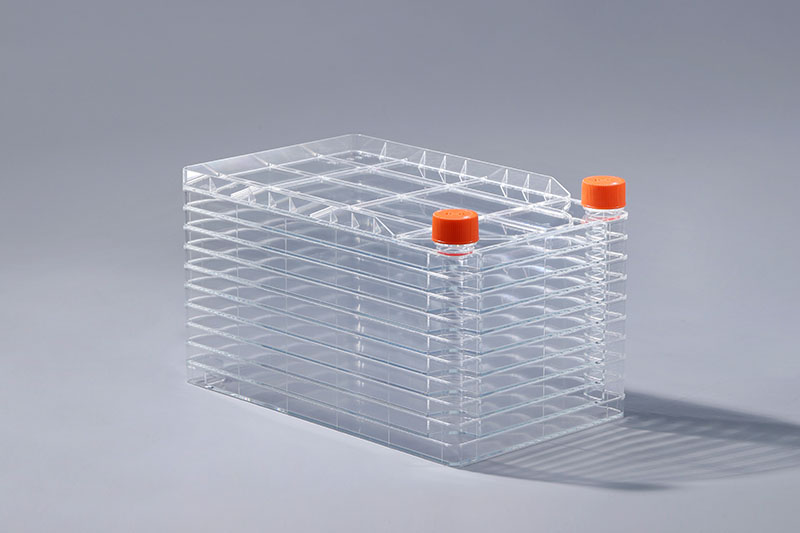When we use cell culture consumables such as cell factories to cultivate cells, we may find that there is a lot of cell contamination, which are: bacterial contamination, fungal contamination, mold contamination, and mycoplasma contamination.
Bacterial contamination is generally caused by Bacillus and Staphylococcus. The main feature of contamination is that the medium in cell culture consumables such as cell factories turns yellow and turbid, and under low magnification, the medium is sandy and filled with intercellular spaces or culture medium, which can be seen under high magnification. Rod- or globular-shaped bacteria swim in the medium (notably different from the Brownian motion of cell debris). It should be noted that in the early stage of pollution, bacteria often exist in groups, and there may not be obvious movements. At this time, vigilance should be aroused.
FuDau 10 Layers Cell Factory
The common fungal contamination is Candida albicans contamination. After contamination, there is no obvious turbidity and discoloration in the culture medium of cell culture consumables such as cell factories. Spherical fungi arranged in a string of beads can be seen under the microscope. shape. The fungus has a weak ability to move, and movement is generally not visible under a microscope.
When the mold is contaminated, the medium is generally not turbid, and the color change is not obvious, but floating white colonies can be seen with the naked eye, and dendritic hyphae can be seen under the microscope.
Mycoplasma cannot be seen under the microscope, so when mycoplasma contamination, only the cell state in the cell factory is obviously deteriorated but there is no sign of other microbial contamination. At this time, it can be determined by PCR detection.
These are several cases of common contamination when using cell factories to cultivate cells. In the next issue, we will talk about how to prevent these cell contamination.
The FAI climbed 5.9 percent year-on-year in the first 11 months of 2018, quickening from the 5.7-percent growth in Jan-Oct, the National Bureau of Statistics (NBS) said Friday in an online statement.
The key indicator of investment, dubbed a major growth driver, hit the bottom in August and has since started to rebound steadily.
In the face of emerging economic challenges home and abroad, China has stepped up efforts to stabilize investment, in particular rolling out measures to motivate private investors and channel funds into infrastructure.
Friday's data showed private investment, accounting for more than 60 percent of the total FAI, expanded by a brisk 8.7 percent.
NBS spokesperson Mao Shengyong said funds into weak economic links registered rapid increases as investment in environmental protection and agriculture jumped 42 percent and 12.5 percent respectively, much faster than the average.
In breakdown, investment in high-tech and equipment manufacturing remained vigorous with 16.1-percent and 11.6-percent increases respectively in the first 11 months. Infrastructure investment gained 3.7 percent, staying flat. Investment in property development rose 9.7 percent, also unchanged.
 English
English



















































